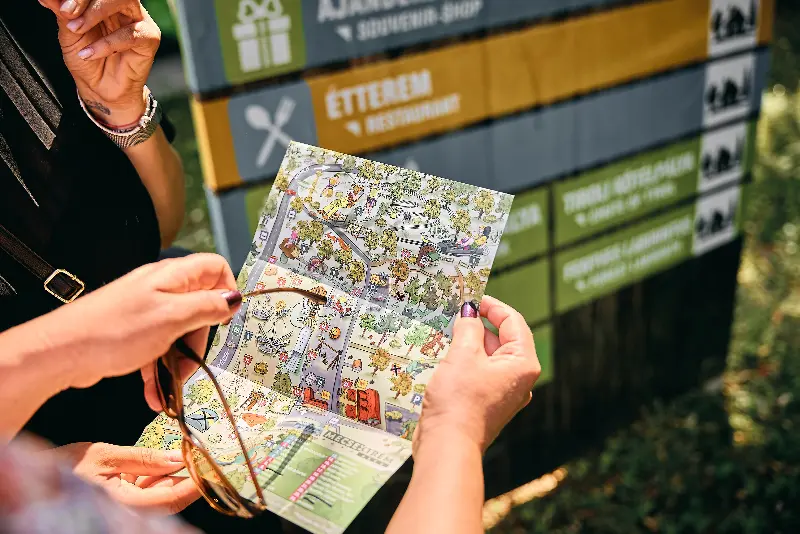
Helyszín címkék:
Outstanding artists, unique collections: 5 memorial museums dedicated to famous Hungarian artists
Mészégető Marcsi
Mihály Munkácsy Museum, Békéscsaba
Békéscsaba is not only an important place for Hungarian gastronomy, it also preserves a special artistic heritage. The Mihály Munkácsy Museum is located in the heart of the city, and is dedicated to the life and art of Mihály Munkácsy, one of the most important Hungarian painters. The painter spent part of his childhood in Békéscsaba, and this influenced his art, too. The city and the stunning landscapes of the Great Plain made a deep impression on the young Munkácsy. The museum not only shows the painter’s early works, but also gives an insight into the years when the later great master was still finding his way as an artist. The museum building alone is imposing: the neoclassical palace has a 19th-century feel and provides the perfect backdrop for Munkácsy’s dramatic, passionate paintings. Visitors can learn more about the artist’s life, the sources of his inspiration, and the landscapes and portraits that he has made over the years in connection with Békéscsaba.

Rippl-Rónai Museum, Kaposvár
József Rippl-Rónai, the Hungarian master of Art Nouveau, was born in Kaposvár, and although he became internationally famous in Paris, his heart always drew him back to his hometown. The museum dedicated to him demonstrates this deep attachment: walking among objects that played an important role in the painter’s life, you can discover a collection that covers his entire oeuvre, from early realist paintings to later works experimenting with colour and more abstract forms. The museum will also be of interest to those who are already familiar with Rippl-Rónai’s works, as it will give them an insight into the deeper layers of the painter’s life and his relationship with the city.
Ferenczy Museum, Szentendre
As an artistic centre, Szentendre has lived and breathed the spirit of creation for centuries. The Ferenczy Museum, located in the heart of the city, has a special place in this tradition, as it commemorates one of the most famous families of Hungarian art, the Ferenczys. Through the works created by three generations of the family (Károly, Valér, Noémi and Béni), visitors can gain an insight into the development of Hungarian painting from the end of the 19th to the middle of the 20th century. Why was Szentendre so important to the family? The city’s picturesque scenery, vibrant art scene and inspiring culture created an artistic community that attracted members of the Ferenczy family. Noémi, for example, who is also known as a textile artist, has found inspiration in the landscape and folk traditions of Szentendre, which is reflected in her works.

Csontváry Museum, Pécs
Pécs, a melting pot of cultures and arts, boasts a special gem: the Csontváry Museum. The museum houses the best-known works of Tivadar Csontváry Kosztka, one of the most enigmatic and extraordinary Hungarian painters, combining deep philosophical ideas with stunning colours. Pécs was a kind of refuge for Csontváry: the city’s vibrant culture, its ancient monuments and Mediterranean atmosphere strongly inspired the painter. The imposing Lonely Cedar stands out for its monumental scale and dramatic colours, depicting the eternal loneliness, and man’s relationship with nature. And The Ruins of the Greek Theatre in Taormina are a reminder of the painter’s travels, where he sought to capture a sense of timelessness as he wandered among the ancient buildings.
Nicolas Schöffer Collection, Kalocsa
Known primarily for its history, agriculture and folk art, Kalocsa is also a city rich in tradition and an exceptional artistic treasure: the birthplace of Nicholas Schöffer, a pioneer of op-art and kinetic art, who became known worldwide as one of the most innovative artists of the 20th century. Stepping through the doors of the Nicholas Schöffer Collection in the heart of the city, you enter a completely different world: the museum, which looks like a traditional small-town building, is a modern interior space where you can discover different periods and styles of Schöffer’s art. They can admire kinetic sculptures that create a magical spectacle through the interplay of space and movement, as well as a number of graphic works, drawings and a short film that give an insight into the artist’s thinking. After viewing the exhibition, visitors can also take part in a fun, interactive programme where they can create their own kinetic artwork.




